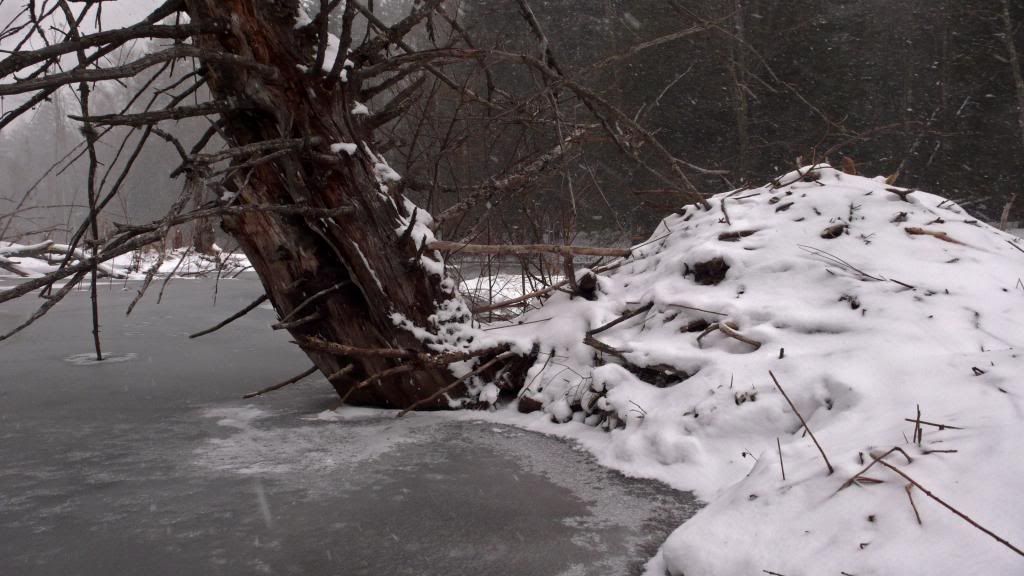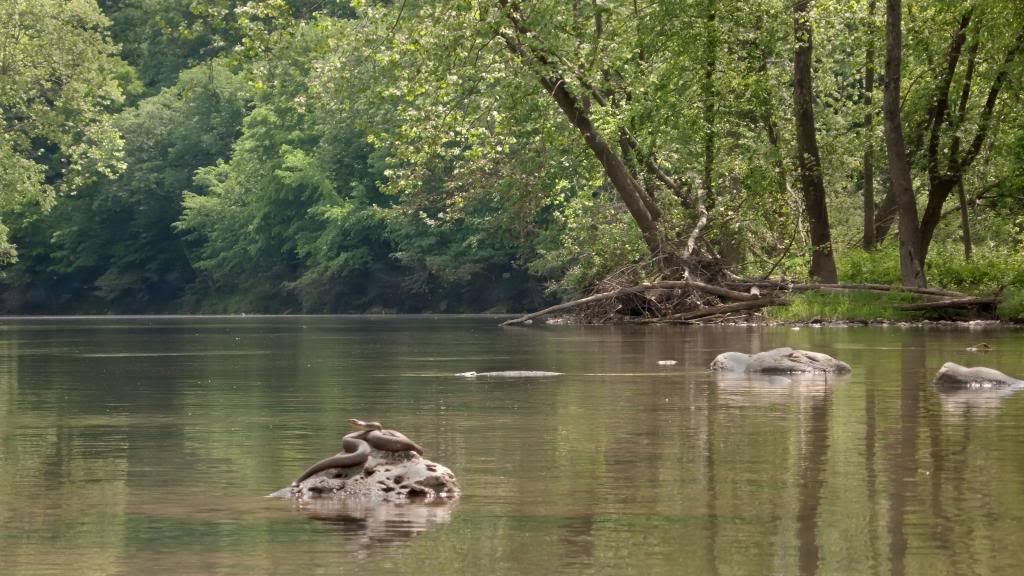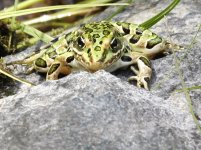Acer - yes lions are plentiful here. I can leave my house and in 30 minutes be guaranteed to be walking on fresh cougar tracks. For as long as I have been hunting deer and elk (since 1976), it has been a rare season that I have not crossed a set of tracks more than once. The town I run trains to in eastern Oregon has them coming in and snatching the occasional unlucky family pet on a fairly regular basis. And yet - it is pretty rare to actually see one, unless you have hounds to find one and chase it up a tree. If no one is seeing spoor, I would bet my money on no cougars in your area. Wolves are no different on that account. You see the sign many times over before you actually see a wolf - although they seem to be less shy than cougars.
The USFWS first released wolves in the Frank Church River of No Return wilderness in the early '90's. IIRC, we were seeing fresh spoor on a regular basis about 100 miles away within about five years. Initially, F&G insisted that those of us who were reporting were mistaken - but they soon relented. Now it's pretty common to see wolves if you spend a fair amount of time where they roam (wherever the elk herds are).
I wish I knew more about the interaction of wolves and cats, but the introduction of wolves has been such a contentious and emotional issue here that there is little such information in the public domain that I consider reliable - from either side. The only thing I can confirm as fact is that the wolves keep the elk herds moving. It has been said that this is a good thing for the environment, especially in places where elk are protected (Yellowstone) - and I believe that.
It was a pleasant surprise that the beavers have hung in there. I was thinking that the extreme spring flooding of 2012 would take out the dams, but it did not. I have heard that beavers will open a spillway when the water rises high, and that rings true from what i saw there. What really surprised me was that they had not been trapped out, since there is active trapping in the area. But for whatever reason, I haven't seen any beaver traps in the area yet. I actually did talk to a trapper nearby one day, and he was out checking muskrat traps. I didn't think to ask him about the market for those - and I didn't care to discuss the beaver (although it's probably silly to think he didn't already know of their presence), so I don't know why I am not seeing beaver traps. I have seen them in other areas.
That back-channel is a cool place. The upper end of it is pretty well screened-off with large cottonwood deadfall, and I think that softens the flows. Several years ago, I participated in a project to install nesting boxes for wood ducks there - which has given the desired results. The island between the main channel and the back-channel holds a few deer and some upland game, and the beaver pond draws in quite a bit of waterfowl. A bit upstream and across the river is a pretty substantial heron rookery. The island is public land and sees some hunting pressure, but it's surprisingly light. The rest of the year, I see no signs of other human visitors. Because it's surrounded by farmland (so far), it's all pretty isolated - especially for being smack in the middle of the most populous valley in Idaho.
The USFWS first released wolves in the Frank Church River of No Return wilderness in the early '90's. IIRC, we were seeing fresh spoor on a regular basis about 100 miles away within about five years. Initially, F&G insisted that those of us who were reporting were mistaken - but they soon relented. Now it's pretty common to see wolves if you spend a fair amount of time where they roam (wherever the elk herds are).
I wish I knew more about the interaction of wolves and cats, but the introduction of wolves has been such a contentious and emotional issue here that there is little such information in the public domain that I consider reliable - from either side. The only thing I can confirm as fact is that the wolves keep the elk herds moving. It has been said that this is a good thing for the environment, especially in places where elk are protected (Yellowstone) - and I believe that.
It was a pleasant surprise that the beavers have hung in there. I was thinking that the extreme spring flooding of 2012 would take out the dams, but it did not. I have heard that beavers will open a spillway when the water rises high, and that rings true from what i saw there. What really surprised me was that they had not been trapped out, since there is active trapping in the area. But for whatever reason, I haven't seen any beaver traps in the area yet. I actually did talk to a trapper nearby one day, and he was out checking muskrat traps. I didn't think to ask him about the market for those - and I didn't care to discuss the beaver (although it's probably silly to think he didn't already know of their presence), so I don't know why I am not seeing beaver traps. I have seen them in other areas.
That back-channel is a cool place. The upper end of it is pretty well screened-off with large cottonwood deadfall, and I think that softens the flows. Several years ago, I participated in a project to install nesting boxes for wood ducks there - which has given the desired results. The island between the main channel and the back-channel holds a few deer and some upland game, and the beaver pond draws in quite a bit of waterfowl. A bit upstream and across the river is a pretty substantial heron rookery. The island is public land and sees some hunting pressure, but it's surprisingly light. The rest of the year, I see no signs of other human visitors. Because it's surrounded by farmland (so far), it's all pretty isolated - especially for being smack in the middle of the most populous valley in Idaho.
Last edited:



